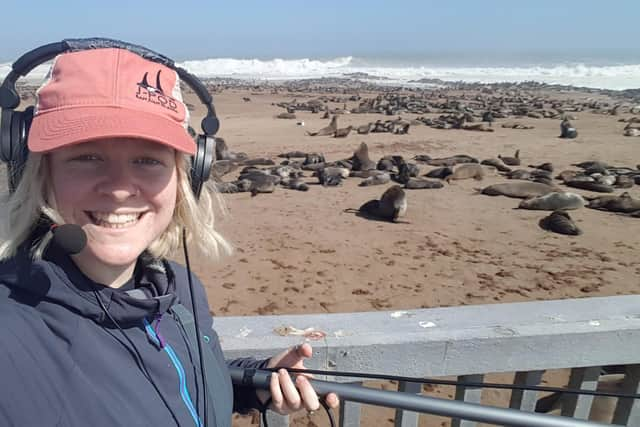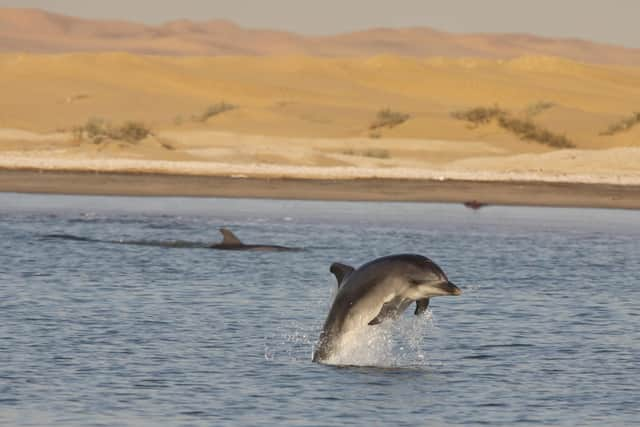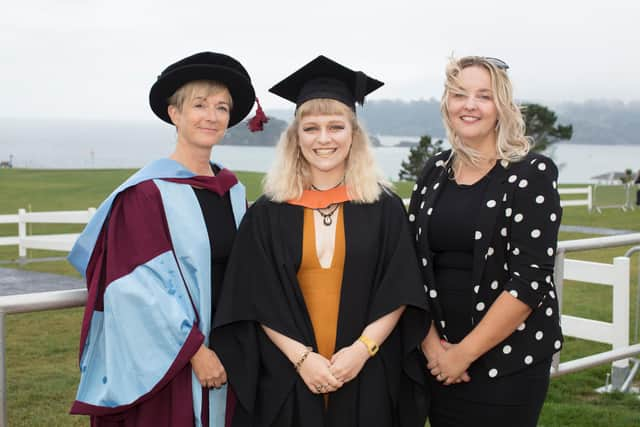Fairfield student takes part in groundbreaking dolphin study
and live on Freeview channel 276
Emma Longden, 23, studied the mammals during two trips to Namibia - thanks to grants from Fairfield Endowed Schools Trust and Rotary Club of Buxton.
Former Fairfield CofE Junior School pupil Emma told how her participation in the self-funded trips was only possible thanks to financial help from the two organisations.
Advertisement
Hide AdAdvertisement
Hide AdEmma, who took part in the study as part of her Marine Biology degree at the University of Plymouth, said: “They’ve been really kind. You have to fund everything yourself.


“Every year I’ve been studying they’ve given me a grant to help me do field trips.”
The student even had the honour of presenting work at the World Marine Mammal Conference in Barcelona in December - after receiving a cash gift from Rotary Club of Buxton.
During the Namibian study - named Mark–recapture of individually distinctive calls - a case study with signature whistles of bottlenose dolphins - Emma analysed more than 4,000 hours of acoustic data from four hydrophones positioned along a section of coastline.


Advertisement
Hide AdEmma and other researchers identified 53 signature whistle types from the data - allowing them to estimate the size of the local population and track their movement.
Advertisement
Hide AdShe said: “We’ve known for 50 years that dolphins have individual whistles but this is the first study that’s proved it - it’s the first time this has been done with any wild animal population.
“It’s really good for conservation work but it can also help track them and see how far they range.”
The work has also been noted for its ‘non-invasive’ methodology - with previous work using photography to identify dolphins by their markings.


Advertisement
Hide AdEmma added: “Taking photos requires humans out in boats - which is expensive and invasive.
“Instead you just leave the hydrophones out in the water and collect them a month later and the data’s all there.”
Advertisement
Hide AdEmma is now beginning a masters degree at the University of St Andrews where she hopes to be analysing more African data during a research project.